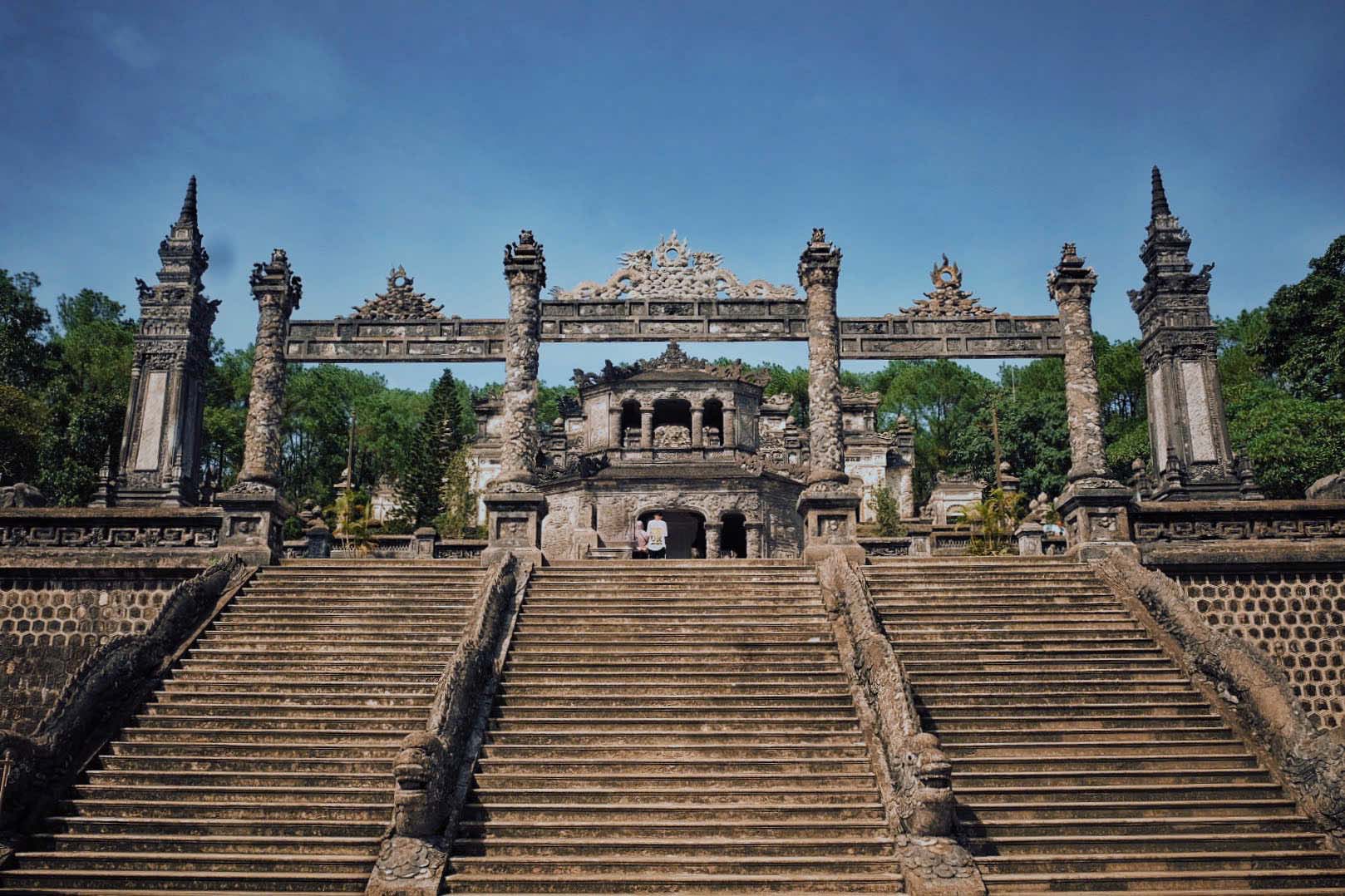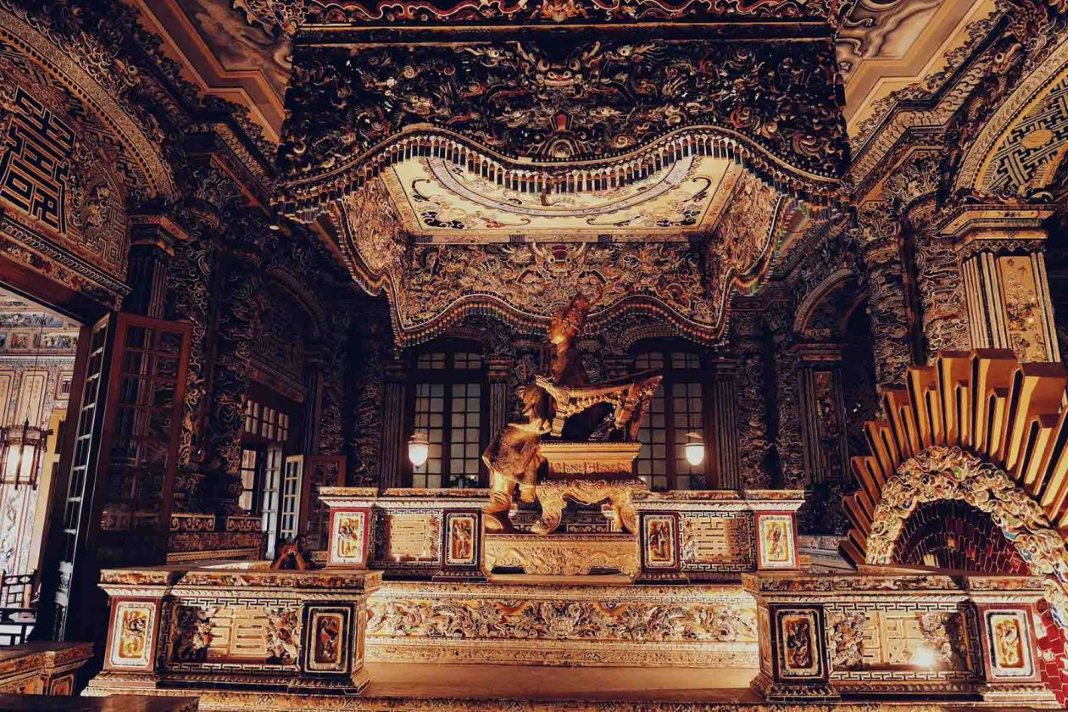Nowadays, Khai Dinh Tomb is one of the major tourist attractions and a must-visit destination for anyone exploring Hue.
The Tomb of King Khai Dinh, also known as Ung Lang (Ung Mausoleum), stands out among the imperial tombs of Vietnam’s Nguyen Dynasty for its fusion of traditional Vietnamese design and Western architectural elements. Located on the slopes of Chau Chu Mountain, around 10 kilometers from downtown Hue, the site is the resting place of King Khai Dinh, the 12th ruler of the dynasty.

According to Hue City’s Department of Tourism, Khai Dinh Tomb is rectangular in shape and features 127 stepped terraces, with the Thien Dinh Palace as its central highlight.
The tomb was built with iron, steel, cement, and tiles imported from France. Decorative porcelain and colored glass for the interior were sourced from China and Japan.

The architecture of Khai Dinh Tomb does not adhere to any single style but rather showcases a fusion of diverse influences, ranging from Hinduism and Buddhism to Gothic and Roman elements. This eclectic mix is reflected in many details, such as tower-like gate pillars inspired by Indian architecture, Buddhist-style stupas, fences shaped like spindly crosses, and a stele house featuring octagonal columns and arched doorways reminiscent of Roman design.
The distinctive fusion of styles in Khai Dinh Tomb mirrors the cultural and political influences that shaped King Khai Dinh’s outlook during a time of East-West interaction in Vietnamese history. It likely explains why the tomb stands out from traditional Vietnamese architecture.
At the heart of Khai Dinh Tomb lies Thien Dinh Palace, perched at the highest point of the complex and composed of five interconnected chambers. Flanking the structure are the Left and Right Guard Rooms, once used for royal tomb guards. At the front is Khai Thanh Hall, featuring an altar and a portrait of King Khai Dinh. The centerpiece is a life-sized bronze statue of the king, with his actual tomb located below. At the rear is his ancestral tablet. The three central chambers are richly decorated with porcelain and glass mosaics, showcasing traditional motifs, such as the Four Noble Plants, Eight Precious Objects, Five Blessings, and tea tray patterns.

Another decorative highlight is the Chinh Tam area, where the king’s tomb lies beneath a life-sized statue topped with a ceremonial canopy. Though made of concrete and reinforced steel, the canopy features remarkably delicate and refined detailing. The statue’s pedestal is also adorned with porcelain and glass mosaics. Common motifs include dragons, swastikas (a traditional symbol of good fortune), and floral patterns.
After 11 years of construction and careful selection of materials, Khai Dinh Tomb emerged as one of its era’s most elaborate and costly imperial tombs. In particular, it is hailed as a ceramic and glass mosaic art masterpiece, celebrated for its remarkable craftsmanship and architectural distinction.









